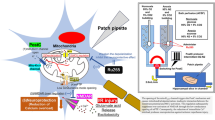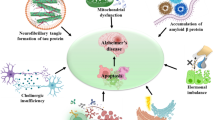Abstract
Selective A3 adenosine receptor agonists have been shown to induce apoptosis in a variety of cell types. In this study we examined the effects of adenosine receptor agonists selective for A1, A2A, or A3 receptors on the induction of apoptosis in primary cultures of rat astrocytes and in C6 glial cells. Treatment of the cells with the A3 receptor agonist Cl-IB-MECA (10 µM) induced apoptosis in both cell types. The effects of Cl-IB-MECA were partially antagonized by the A3 receptor-selective antagonist MRS 1191. In contrast, the A1 and A2A receptor agonists, CPA and CGS 21680, respectively, did not have significant effects on apoptosis in these cells. Cl-IB-MECA reduced the expression of endogenous Bcl-2, whereas it did not affect the expression of Bax. Overexpression of Bcl-2 in C6 cells abrogated the induction of apoptosis induced by the A3 agonist. Cl-IB-MECA also induced an increase in caspase 3 activity and caspase inhibitors decreased the apoptosis induced by the A3 agonist. These findings suggest that intense activation of the A3 receptor is pro-apoptotic in glial cells via bcl2 and caspase-3 dependent pathways.
Similar content being viewed by others
References
Abbracchio M. P., Rainaldi G., Giammarioli A. M., Ceruti S., Brambilla R., Cattabeni F., et al. (1997) The A3 adenosine receptor mediates cell spreading, reorganization of actin cytoskeleton, and distribution of Bcl-XL: studies in human astroglioma cells. Biochem. Biophys. Res. Commun. 241, 297–304.
Brodie C., Blumberg P. M., and Jacobson K. A. (1998a) Activation of the A2A adenosine receptor inhibits nitric oxide production in glial cells. FEBS Lett. 429, 139–142.
Brodie C., Bogi K., Acs P., Lorenzo P. S., Baskin L., and Blumberg P. M. (1998b) Protein kinase C delta (PKCdelta) inhibits the expression of glutamine synthetase in glial cells via the PKCdelta regulatory domain and its tyrosine phosphorylation. J. Biol. Chem. 273, 30,713–30,718.
Brodie C., Weizman N., Katzoff A., Lustig S., and Kobiler D. (1997) Astrocyte activation by Sindbis virus: expression of GFAP, cytokines, and adhesion molecules. Glia 19, 275–285.
Ceruti S., Barbieri D., Franceschi C., Giammarioli A. M., Rainaldi G., Malorni W., et al. (1996) Effects of adenosine A3 receptor agonists on astrocytes: induction of cell protection at low and cell death at high concentration. Drug Dev. Res. 37, 177.
Dunwiddie T. V., Diao L., Kim H. O., Jiang J. L., and Jacobson K. A. (1997) Activation of hippocampal adenosine A3 receptors produces a desensitization of A1 receptor-mediated responses in rat hippocampus. J. Neurosci. 17, 607–614.
Fredholm B. B., Abbracchio M. P., Burnstock G., Daly J. W., Harden T. K., Jacobson K. A., et al. (1994) Nomenclature and classification of purinoceptors. Pharmacol. Rev. 46, 143–156.
Jacobson K. A., Nikodijevic O., Shi D., Gallo-Rodriguez C., Olah M. E., Stiles G. L., and Daly J. W. (1993) A role for central A3-adenosine receptors. Mediation of behavioral depressant effects. FEBS Lett. 336, 57–60.
Jacobson K. A., Park K. S., Jiang J. L., Kim Y. C., Olah M. E., Stiles G. L., and Ji X. D. (1997) Pharmacological characterization of novel A3 adenosine receptor-selective antagonists. Neuropharmacology 36, 1157–1165.
Kim H. O., Ji X. D., Siddiqi S. M., Olah M. E., Stiles G. L., and Jacobson K. A. (1994) 2-Substitution of N6-benzyladenosine-5′-uronamides enhances selectivity for A3 adenosine receptors. J. Med. Chem. 37, 3614–3621.
Korsmeyer S. J. (1999) BCL-2 gene family and the regulation of programmed cell death. Cancer Res. 59, 1693s-1700s.
MacGregor D. G., Miller W. J., and Stone T. W. (1993) Mediation of the neuroprotective action of R-phenylisopropyl-adenosine through a centrally located adenosine A1 receptor. Br. J. Pharmacol. 110, 470–476.
Miyashita T., Harigai M., Hanada M., and Reed J. C. (1994) Identification of a p53-dependent negative response element in the bcl-2 gene. Cancer Res. 54, 3131–3135.
Ongini E., Adami M., Ferri C., and Bertorelli R. (1997) Adenosine A2A receptors and neuroprotection. Ann. NY Acad. Sci. 825, 30–48.
Peakman M. C. and Hill S. J. (1996) Adenosine A1 receptor-mediated inhibition of cyclic AMP accumulation in type-2 but not type-1 rat astrocytes. Eur. J. Pharmacol. 306, 281–289.
Sastry K. J., Marin M. C., Nehete P. N., McConnell K., Naggar A. K., and McDonnell T. J. (1996) Expression of human immunodeficiency virus type I tat results in down-regulation of bcl-2 and induction of apoptosis in hematopoietic cells. Oncogene 13, 487–493.
Schubert P., Ogata T., Marchini C., Ferroni S., and Rudolphi K. (1997) Protective mechanisms of adenosine in neurons and glial cells. Ann. NY Acad. Sci. 825, 1–10.
Selvakumaran M., Lin H. K., Miyashita T., Wang H. G., Krajewski S., Reed J. C., et al. (1994) Immediate early up-regulation of bax expression by p53 but not TGF beta 1: a paradigm for distinct apoptotic pathways. Oncogene 9, 1791–1798.
Shneyvays V., Jacobson K. A., Li A. H., Nawrath H., Zinman T., Isaac A., and Shainberg A. (2000) Induction of apoptosis in rat cardiocytes by A3 adenosine receptor activation and its suppression by isoproterenol. Exp. Cell Res. 257, 111–126.
Von Lubitz D. K., Carter M. F., Deutsch S. I., Lin R. C., Mastropaolo J., Meshulam Y., and Jacobson K. A. (1995) The effects of adenosine A3 receptor stimulation on seizures in mice. Eur. J. Pharmacol. 275, 23–29.
Von Lubitz D. K., Lin R. C., Bischofberger N., Beenhakker M., Boyd M., Lipartowska R., and Jacobson K. A. (1999) Protection against ischemic damage by adenosine amine congener, a potent and selective adenosine A1 receptor agonist. Eur. J. Pharmacol. 369, 313–317.
Von Lubitz D. K., Lin R. C., Popik P., Carter M. F., and Jacobson K. A. (1994) Adenosine A3 receptor stimulation and cerebral ischemia. Eur. J. Pharmacol. 263, 59–67.
Yao Y., Sei Y., Abbracchio M. P., Jiang J. L., Kim Y. C., and Jacobson K. A. (1997) Adenosine A3 receptor agonists protect HL-60 and U-937 cells from apoptosis induced by A3 antagonists. Biochem. Biophys. Res. Commun. 232, 317–322.
Author information
Authors and Affiliations
Corresponding author
Rights and permissions
About this article
Cite this article
Appel, E., Kazimirsky, G., Ashkenazi, E. et al. Roles of BCL-2 and caspase 3 in the adenosine A3 receptor-induced apoptosis. J Mol Neurosci 17, 285–292 (2001). https://doi.org/10.1385/JMN:17:3:285
Received:
Accepted:
Issue Date:
DOI: https://doi.org/10.1385/JMN:17:3:285




